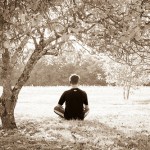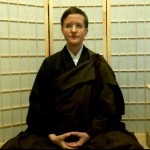 The most useful resource I’ve encountered so far in my journey is a concept called “active hope.” It’s presented by Joanna Macy and Chris Johnstone in their book, Active Hope: How to Face the Mess We’re in without Going Crazy. I confess that I buy a lot of books I never finish, but I finished this one!
The most useful resource I’ve encountered so far in my journey is a concept called “active hope.” It’s presented by Joanna Macy and Chris Johnstone in their book, Active Hope: How to Face the Mess We’re in without Going Crazy. I confess that I buy a lot of books I never finish, but I finished this one!
There are plenty of people out there with recommendations for how to best think about or live your life. Often the advice they give is based on a system they’ve created that works for them and may or may not work for you, or on a philosophy about what should work (I’m certainly tempted to do this myself).
The material Joanna Macy presents is different. It’s based on five decades of activism, Buddhist practice, and personal interactions with hundreds (or more likely thousands) of people who were seeking a way to play an active role in what Macy calls an “epochal transition from an industrial society committed to economic growth to a life-sustaining society committed to the healing and recovery of our world.” The exercises, concepts, and visions presented in this book have been tried, tested, and refined throughout decades of work. They have helped many people, myself included, develop a new view of the world that motivates and inspires while providing relief from despair.
I have to admit a certain measure of skepticism and aversion on my part to aspects of Macy’s work that, at first, seem a little… idealistic? Pollyanna-ish? Hippie flavored? For example, Macy and the people she works with call the epochal transition to a life-sustaining society the “Great Turning.” People can find support for their efforts to be part of the Great Turning in the “Work That Reconnects,” a process that involves a fair amount of group work and emotional processing.
I find myself somewhat wary of getting sucked into something because it is emotionally appealing, or losing my ability to spot bullshit because I’ve gotten emotionally worked up, or getting overly excited about a new vision that I’m just going to eventually forget. Part of this wariness is because I belong to the generation after the hippies, which watched amazing, radical ideas and behaviors fade into the conservative business-as-usual of the 1980’s. It’s sometimes easy to feel cynical about efforts to make substantial changes in the world.
However, Macy and Johnstone encourage us to set our sights as high as we can, and they make a convincing argument for why this is not only reasonable but absolutely necessary. We’re asked to “imagine the future we hope for” – to liberate our imaginations and our hearts, and picture the world we’d like to see. We’re asked to temporarily set aside all the reasons we can come up with that such a world is unlikely to come about.
When I do this, I unlock within myself a great source of energy, love, inspiration, determination, creativity, patience, and vision. I start to feel capable of great things. I can imagine myself joining in wholeheartedly with the historic crowds at Woodstock, yelling out and demanding the end of the Vietnam war or passionately forecasting the demise of racism. I imagine writing this blog for a year and inspiring a active conversation with hundreds and thousands of other ordinary folks about how we can get more engaged in the Great Turning. I imagine new movements developing across the world in which people innovate new ways to live as responsible and compassionate global citizens.
I worry just a little bit that I’m getting silly, but that’s where active hope comes in. Macy and Johnstone contrast active hope with passive hope: in passive hope we allow ourselves to feel hopefulness because a preferred outcome seems likely, while active hope is about desire and has nothing to do with our guesses about the likelihood of success. They write:
“Active Hope is a practice. Like tai chi or gardening, it something we do rather than have. It is a process we can apply to any situation, and it involves three key steps. First, we take a clear view of reality; second, we identify what we hope for in terms of the direction we’d like things to move in or the values we’d like to see expressed; and third, we take steps to move ourselves or our situation in that direction.
“Since Active Hope doesn’t require our optimism, we can apply it even in areas where we feel hopeless. The guiding impetus is intention; we choose what we aim to bring about, act for, or express. Rather than weighing our chances and proceeding only when we feel hopeful, we focus on our intention and let it be our guide.”
Anyway, this is probably my “book I wish everyone would read.” I’ll be checking back in about this again soon, because this very evening I get to try some of the Work That Reconnects at a workshop I organized at my Zen center.
If you feel inspired to share something about the future you hope for when you liberate your imagination, leave a comment!












